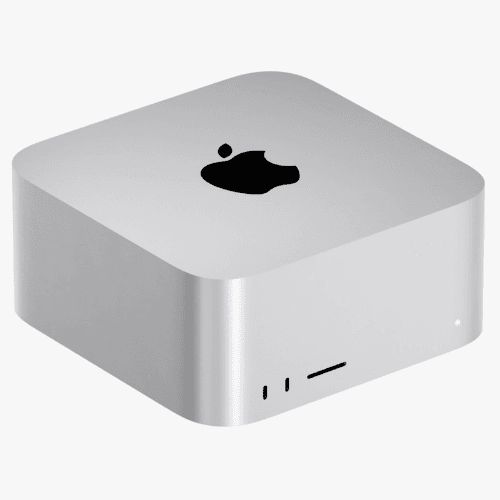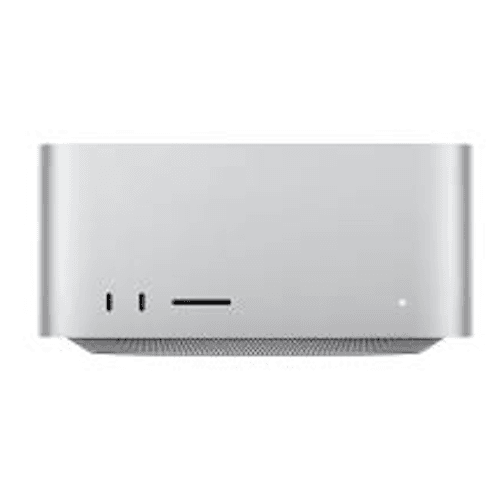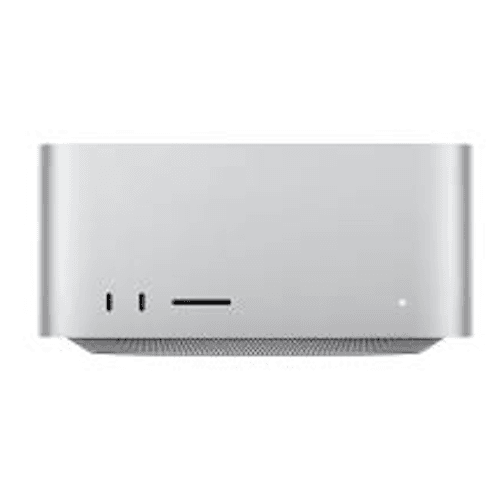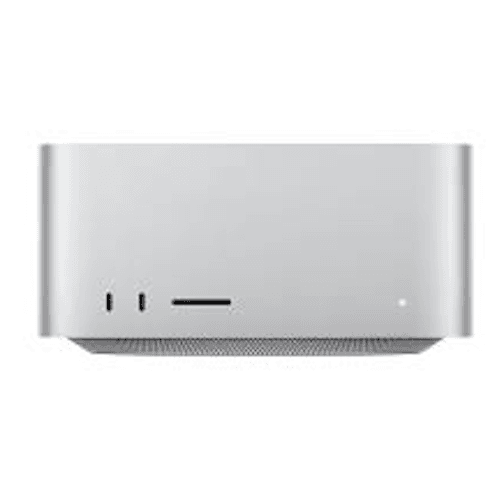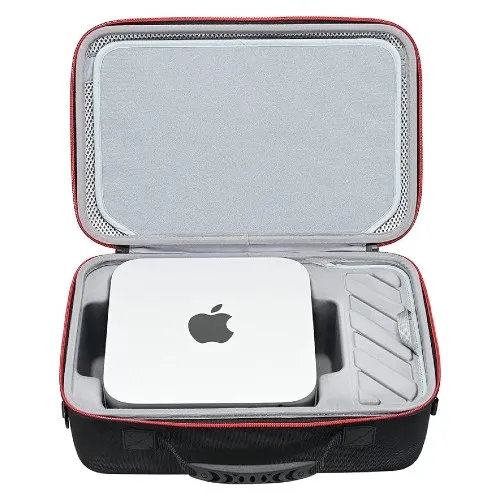Apple Mac Studio review: Serious power for creative pros
Summary
Quick verdict: The Mac Studio is way too much computer for everyday users, but if you constantly shuffle around large data sets, work with high resolution video or have hundreds of RAW images to sort, select and tweak, its power and flexibility make it a compelling computer.
- Ports at the front – all praise be to Jobs!
- M1 Max is powerful, M1 Ultra should be ultra-powerful
- Rear ports allow for connections to just about everything
- Surprisingly heavy
- Not upgradeable
- Mac Pro coming later this year should be even more powerful
Apple's Mac Studio takes the core concepts behind the Mac Mini and supercharges them with an eye towards creative professionals who need a great deal more processing power.
The end result isn't an inexpensive computer, especially for the M1 Ultra variant, but it's one that fuses together good silicon design with good practical design. It's not a computer for everyone, but it does point to some features that hopefully will trickle down to the Mac Mini the next time there's a refresh of that line.
If you do work creatively and want a powerful desktop system with oodles of flexibility thanks to its wide array of ports – and if you can meet the asking price, especially for those M1 Ultra models – then it's an easy recommendation.
Buy Apple Mac Studio products
Apple Mac Studio review: Apple finally made a useable computer, not just a pretty one

Image: Alex Kidman/Finder
I'm going to cut to the chase here. The most exciting thing about the Mac Studio is that somebody, somewhere at Apple must have read the many thousands of words I've written over the years bemoaning the fact that iMacs, Mac Minis and Mac Pros all lacked easily accessible ports.
Yes, it's very pretty to have a clean silver aluminium line around your computer, but it's also a right royal pain in the backside when you need to plug in a peripheral and you have to either navigate where it is by feel or lean over the computer to try to work out where it is.
At a stroke, the Mac Studio does away with this problem with dual USB-C ports and an SDXC card reader directly accessible from the front.
I'll be blunt here.
MORE OF THIS KIND OF THING, APPLE.
Ahem.

Image: Alex Kidman/Finder
Outside my excitement at a trio of ports (yes, I'm a very sad and lonely man, before you ask), the other surprising factor with the Mac Studio's design is that it's a chunky little beast. The design debt to the Mac mini is obvious, but the Mac Studio is taller and heavier, mostly to accommodate some serious fans for heat dissipation.
That's especially true for the M1 Ultra variant of the Mac Studio, which is a full 900 grams heavier than the M1 Max model I've been testing out. Weight doesn't matter quite as much for a desktop unit, of course, but still, that's a full iPad and then some heavier just to keep the Mac Studio cool!
Spin the Mac Studio around – and to be fair to my earlier comment this isn't that hard to do at least on this model – and you'll be greeted with a power button, headphone jack, HDMI, dual USB-A, power, gigabit ethernet and 4 Thunderbolt ports. If you opt for the fancier M1 Ultra model you even get Thunderbolt at the front too.

Image: Alex Kidman/Finder
All of this adds up to a small form factor PC that can connect to just about anything you'd care to name, including multiple displays, storage media and other peripherals.
An oddity of the Mac Studio's design and size is that it won't quite fit neatly underneath the new Mac Studio Display, which I tested concurrently. The basic foot of the Mac Studio is large enough to prop up the display, but not enough to place the Mac Studio upon. Do that, and it'll tilt forwards in an ungainly fashion.
It's an odd move given Apple's simultaneous launch and insistence that they're products that work well together. They'll certainly connect, but you'll have to pick placing the Mac Studio to either the left or right of the Studio Display Stand rather than centrally. I expect the Mac third-party peripheral makers are probably sketching up expanded Studio Display feet as I type this.
Apple Mac Studio review: The performance of the M1 Max is fast, so the M1 Ultra should be off the charts

Image: Alex Kidman/Finder
At the outset it's important to note that, unlike the currently available M1 MacBook Air or smaller MacBook Pro, there's a lot of variance in what might be under the aluminium frame of the Mac Studio.
The model that Apple supplied to me for review was running on the M1 Max silicon a 10-core CPU and 32-core GPU with 64GB of RAM and a 2TB hard drive. That's a configuration that would cost you $4,899 outright, but I could dial that down all the way to $3,099 with only a 24-core GPU, 32GB of RAM and 512GB of onboard storage.

Image: Alex Kidman/Finder
Conversely, if you want all the trimmings, a full-fat Mac Studio with an M1 Ultra (20-core CPU, 64-core GPU), 128GB of RAM and 8TB of integrated storage will hit your wallet for an impressive (or scary) $12,099.
As you might expect, that does mean that there should be a variable range of performance.
I mean, I'm writing this review up on the Mac Studio, and of course it works and flies through barely noticing that I'm there, but that's not what it's for. If you want an everyday computing Mac in a headless fashion, save yourself considerable cash and opt for one of the M1-based Mac Mini models instead.
For my testing purposes, I first put the Mac Studio through its paces with a few commercial synthetic benchmarks, just to see how it stacked up against other Apple silicon-based devices.
Not surprisingly, the Mac Studio, even in its non-Ultra form, is quite a hefty performer:
Those tables don't tell the whole story, although they do create an interesting balance proposition against the similarly equipped M1 Max version of the MacBook Pro 16-inch. You'd need to weigh up your needs for portability carefully against your needs for the Mac Studio's additional ports and then the pricing for extras such as RAM and storage for each configuration.

Image: Alex Kidman/Finder
The simple reality here is that you need high-end apps and need to really explore what those possibilities might be.
My day-to-day Mac use covers text, photography, audio and video, but even leaving multiple apps including Adobe Photoshop, Audition, Final Cut Pro X and then a whole host of potentially memory-hogging Google Chrome tabs open, I've barely been able to make the Mac Studio sweat. Given its effectively-2-M1-Max-processors-nailed-together status, the M1 Ultra should (at least on paper) be an even more capable machine.
Then again, for that price, it absolutely should be.
Should you buy it?
- Buy it if you need the fastest Mac you can buy right now – presuming you can afford it.
- Don't buy it if you need component upgradeability or can wait to see what lays in store with the new Mac Pro.
The Mac Studio is a serious piece of kit with a price point to match and that does mean that it's not a computer for everyone. I'd love it if somebody wanted to buy me one, but for my everyday work it would be total overkill, even in its baseline M1 Max configuration.
So it's not for me, but that's totally fine, because it's not hard at all to see who it would suit. The biggest caveat beyond price is that Apple wasn't subtle at all about the fact that it has a revision upcoming for the Mac Pro line, which is where it would otherwise pitch to its professional-grade customers.
It's pretty safe to assume that the M1 Ultra might be the bottom floor of the next-gen Mac Pro's capabilities and it's expected this year. If you can hold your ground for now, it's likely to be Apple's true supercomputer, with an equally super price.
Apple Mac Studio review: Pricing and availability
The Apple Mac Studio retails in Australia with prices starting at $3,099. The model provided for review retails at $4,899.
Specifications
Specs
Features
How we tested
Apple loaned me a Mac Studio and Studio Display for a fortnight to test out its capabilities. It was tested with a range of benchmarks, as well as use for more intensive tasks such as photo manipulation, video editing and rendering as well as everyday computer usage over that timeframe, connected to an Apple Studio Display and an LG widescreen monitor to test out its visual capabilities.
The reviewer has more than 2 decades of tech product reviewing under his belt and is a multi-time Australian IT Journo award winner, including awards for best reviewer and best technical journalist.
Images: Alex Kidman
More Finder reviews
- Ettitude Signature Sateen Sheet Set Review
- Emma sofa bed review: An excellent addition to your home – if you can afford it
- Philips Series 5000 2-in-1 Air Purifier and Dehumidifier review: A gentle touch
- Kobo Clara 2E: The ideal travelling companion
- Philips Series 2200 LatteGo Fully Automatic Espresso Machine review: Better than pods, I guess.
